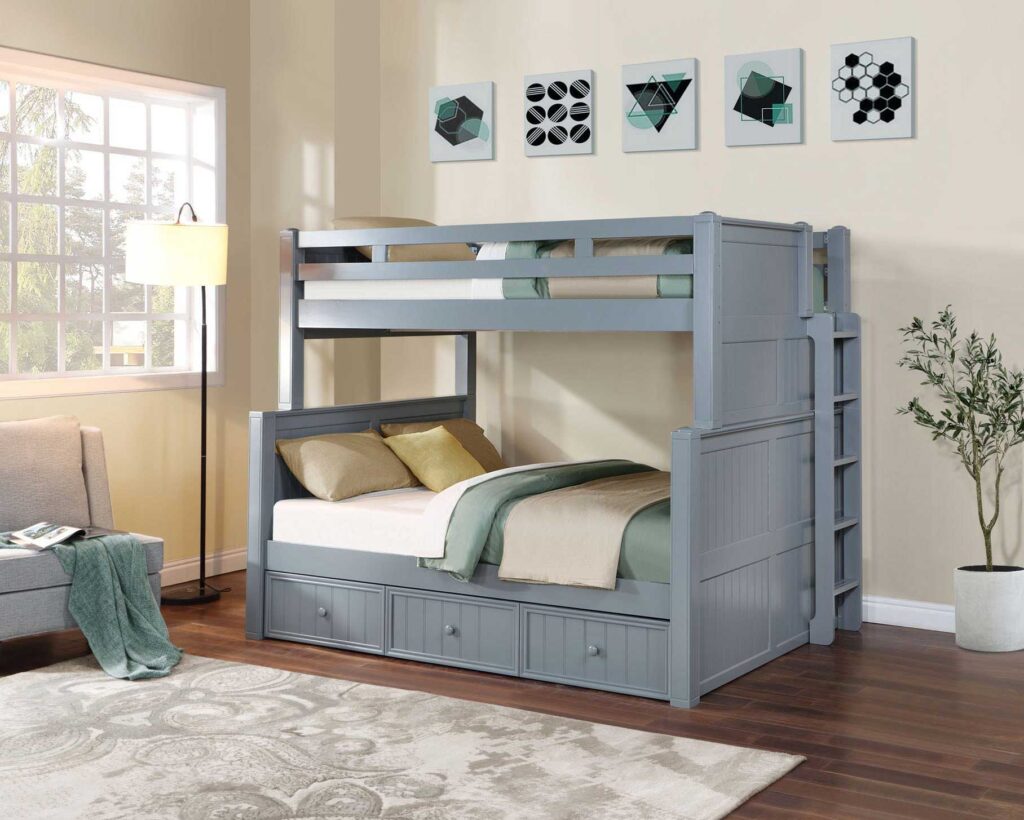
Bunk beds are a popular choice for families looking to maximize space in their bedrooms. They offer a fun and practical solution, allowing two children to share a room comfortably. However, the unique design of bunk beds raises concerns about their stability and potential for collapse. Understanding the factors that contribute to bunk bed collapses is crucial for ensuring safe usage and preventing accidents. This article will delve into the safety concerns associated with bunk beds, explore the common causes of collapses, and provide essential tips for maintaining bunk bed stability.
This article will cover various aspects of bunk bed safety, including potential hazards, assembly guidelines, weight limits, necessary safety features, and maintenance practices. By following the information presented here, parents and caregivers can create a safe sleeping environment for children using bunk beds.
Bunk Bed Safety Concerns
Bunk beds present unique safety concerns compared to traditional single beds. The elevated design increases the risk of falls, especially for younger children who may not have developed full coordination and balance. Additionally, the weight distribution on a bunk bed structure can be uneven, potentially leading to instability if not properly assembled or maintained.
Another concern is the potential for entrapment. Children playing in or around bunk beds could become trapped between the mattress, railings, or ladder. It’s essential to supervise children using bunk beds and ensure they understand the importance of safe play practices. Furthermore, the proximity of two sleeping areas can lead to disturbances and sleep disruptions, which may impact overall well-being.
Causes of Bunk Bed Collapses
Several factors contribute to bunk bed collapses, making it crucial to address them proactively. Improper assembly is a leading cause, as incorrect placement of bolts, screws, or support beams can weaken the structure’s integrity. Overloading the bunk bed by exceeding the weight limit specified by the manufacturer is another significant risk factor.
Inadequate maintenance also plays a role in bunk bed collapses. Loose screws, worn-out slats, or damaged railings can compromise the stability of the bed over time. Neglecting regular inspections and repairs can create hazardous conditions. Additionally, using bunk beds on uneven surfaces or floors with inadequate support can contribute to instability and increase the risk of collapse.
Assembly and Weight Limits
Proper assembly is paramount for ensuring the safety and stability of a bunk bed. Always follow the manufacturer’s instructions carefully, using the provided tools and hardware. Double-check all connections and ensure that bolts are tightened securely. If you encounter any difficulties during assembly, consult the manufacturer’s customer service or seek assistance from a qualified professional.
Adhering to the weight limits specified by the manufacturer is crucial for preventing bunk bed collapses. Exceeding these limits can put undue stress on the bed frame and support structures, leading to instability and potential failure. Ensure that both children using the bunk bed fall within the designated weight range.
Essential Safety Features
Look for bunk beds equipped with essential safety features to minimize the risk of accidents. Sturdy railings around the top bunk are crucial for preventing falls. Choose bunk beds with a ladder that is securely attached and has non-slip treads for safe climbing.
A guardrail at the foot of the top bunk can further enhance safety by preventing children from rolling out during sleep. Consider bunk beds with built-in slat supports to prevent mattress sagging and ensure proper weight distribution. Additionally, some bunk beds feature a center support beam for added stability.
Maintaining Bunk Bed Stability
Regular maintenance is essential for preserving the stability of a bunk bed over time. Inspect the bed frame periodically for loose screws, bolts, or slats. Tighten any loose connections promptly to prevent further deterioration. Replace worn-out or damaged parts immediately.
Ensure that the mattress used on the top bunk is firm and supportive to distribute weight evenly. Avoid placing heavy objects on the bunk bed, as this can strain the structure. Keep the area around the bunk bed clear of clutter to minimize tripping hazards.
Conclusion
Bunk beds offer a space-saving solution for families but require careful consideration regarding safety. Understanding the potential risks associated with bunk bed collapses and implementing preventive measures is crucial for creating a safe sleeping environment for children. By following assembly guidelines, adhering to weight limits, selecting bunk beds with essential safety features, and maintaining regular upkeep, parents can minimize the chances of accidents and ensure that their children enjoy a safe and comfortable sleep experience.
